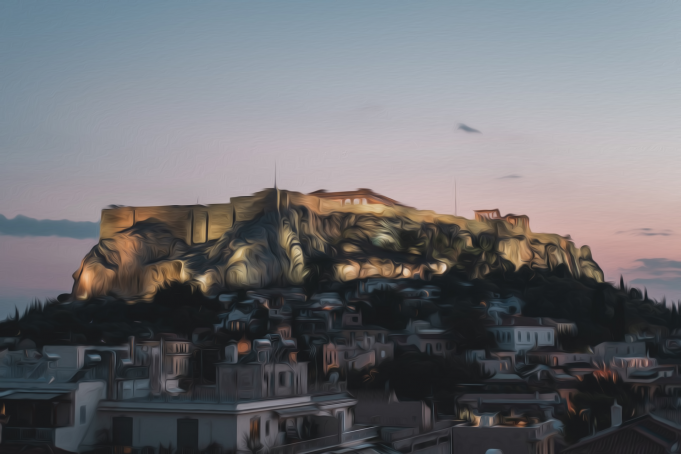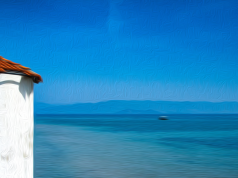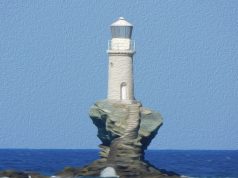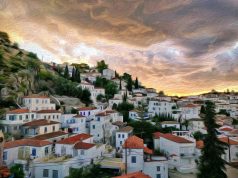Apokries Greece is a carnival held in Athens that lasts for around three weeks. Because the majority of the Greeks are Greek Orthodox, Greek people follow the traditions of their religion accordingly. This Greek carnival is one of the ways to practice these customs.
This is a carnival that consists of people in the streets eating, dancing, and singing. In addition, live concerts take place both indoors and outdoors like squares as well.
Let’s discover this lively event in more detail below.
History of Apokries Greece
Festivities like Apokries date back to the periods of ancient Greece. They take place in honor of Dionysus who is the god of wine and joy. It’s to celebrate the end of winter.
There are fasting periods that precede religious holidays. These periods may take from 15 to 40 days. This fasting practice dates back to the early Christian periods. In Greece, it’s the Sarakosti fasting, also known as Lent. It takes around forty days before Easter.
During Lent, people don’t eat meat, dairy, and fish. However, seafood is allowed. Apokries, however, take place before Lent starts, and lasts for two weeks. Apokries means “a leave from meat”, which comes from “apo” (away from) and “kreas” (meat).
About the Greek Carnival
- During Apokries Greece, people hold home parties, and clubs and bars change their decorations accordingly. Especially in Plaka, a big crowd of thousands of people gathers and enjoys the streets at night. They throw confetti as well. In the southwest suburb of Moschato, you can enjoy a musical parade of costumes and lots of dancing during the day. You can get the opportunity to visit archeological sites during the carnival, too.
- Kids also enjoy this carnival in a great way: they wear their own costumes such as superhero dresses. In addition, there are clowns and animators for the children and face-painting activities. There are also contests held for choosing the best costume.
- You can see certain Pagan roots in this carnival as well. For example, some wear animal costumes, and their appear large bells. The bells are for excluding evil with the high sound of the bells. There are also Boules and Janissaries of Naousa on the streets. You can identify Janissaries with their fustanella skirts. The Boules, on the other hand, are men dressed as women. These people wear masks called prósopi (faces), and they dance with special steps as the custom.
- Especially the last two weekends come with thousands of people gathering in the Plaka and Psiri areas. Both streets, bars, discos, clubs, and restaurants are full of people. On the streets, you’ll encounter plastic clubs that are thrown on the heads. It’s highly possible that you’ll get hit by it, especially on narrow streets. This tradition is believed to come from the ancient Dionysian festivals for the adoration of the phallus.
- The celebrations of this Greek carnival spread over the country. In Patras in the Peloponessos, in Thessaly (the town of Tyrnavo), Rethymnon in Crete, and Xhanti have various colorful fun. So, you can find some celebrations anywhere in the country including on islands and towns.
Tsiknopempti
Tsiknopempti is the second Thursday before the end of the carnival, which is also known as Smoke Thursday. It always begins on a Thursday. It takes place 10 days before fasting starts. Tsiknopempti includes parades and parade floats. Traditional costumes and music join these parades as well. People eat meat during this period, and they set up barbecues outside starting in the early afternoon. As part of this carnival in Greece, meat such as grilling chops, sausages, and steaks start to be cooked. People drink alcohol with it, and then they dance. Tavernas are also full of people during Tsiknopempti.
Lent
The beginning of Lent is known as Clean Monday or Ash Monday. This is the end of the carnival, and also a national holiday in Greece. This time, there is no meat at all, and people eat food such as olives and seafood without blood. They eat seafood such as shrimp and octopus. As part of this Athens folk festival, halvah is consumed as a dessert with no dairy. Taramosalata is another alternative food eaten as well. On Clean Monday, people fly kites and join picnics as well.
At these picnics, they choose to eat shellfish, octopus, or taramosalata. Other food like dips and bread called Lagana also appear during this period. People pay special attention to food not being prepared from an animal’s blood. People also don’t eat eggs or fish either.
For the picnics, people choose to go to Philopappou Hill which takes place opposite the Acropolis. They also take their kites along with picnic baskets. Kite flying during this Athens carnival has a special meaning as well. It stands for purity. In addition, it’s believed that your soul gets closer to the divine through flying a kite. This is a belief that dates back to ancient times. Besides its meaning, it’s a fun activity for both kids and grown-ups. During this time, people also wish each other Happy Lent, which is called “Kali Sarakosti”.
The Dates of Apokries
The answer to the question “When is Carnivale?” changes each year. the reason is that the Orthodox Church follows the Julian calendar. For this reason, the dates for the Greek carnival, Lent and Easter differ each year. However, the carnival usually takes place at the end of February or early March.
Apokries 2022, for example, took place from Feb. 13 to March 6. Tsiknopempti was on Feb. 24. And lastly, Clean Monday (“Kathara Deftera”) for Athens carnival 2002 was on March 7.
In short, Apokries is a great occasion for one to join thanks to the colorful traditions. You can enjoy a few weeks by drinking and eating Greek specialties. You also get the chance to meet new people in the Carnivale. Along with the locals, tourists love this tradition a lot, although not many tourists arrive there during that period. It’s a way to bid farewell to winter and welcome spring.




